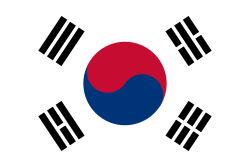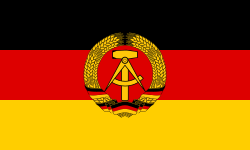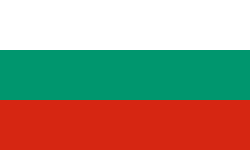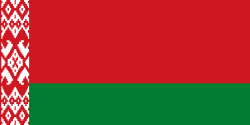Voldemar Väli
| Voldemar Väli | |
|---|---|
 | |
| Osobní informace | |
| Datum narození | 10. ledna 1903 |
| Místo narození | Kuressaare |
| Datum úmrtí | 13. dubna 1997 (ve věku 94 let) |
| Místo úmrtí | Stockholm |
| Stát | Estonsko |
| Sportovní informace | |
| Klub | Tallinna Sport |
| Kategorie | pérová váha, lehká váha |
| Zápasnický styl | řecko-římský styl |
| Účast na LOH | 1924, 1928, 1936 |
| Přehled medailí | ||
|---|---|---|
| zlato | LOH 1928 | lehká váha |
| bronz | LOH 1936 | lehká váha |
| Mistrovství Evropy v zápasu řecko-římském | ||
| zlato | ME 1926 | pérová váha |
| zlato | ME 1927 | pérová váha |
| stříbro | ME 1930 | lehká váha |
| stříbro | ME 1931 | lehká váha |
Voldemar Väli (10. ledna 1903 Kuressaare – 13. dubna 1997 Stockholm) byl estonský zápasník. Věnoval se zápasu řecko-římskému v pérové a lehké váze.
Pracoval jako jeřábník v tallinnském přístavu. Zápasu se věnoval od roku 1920, v roce 1924 při svém prvním olympijském startu obsadil 8.-12. místo. Na mistrovství Evropy v zápasu řecko-římském 1926 získal zlatou medaili v kategorii do 62 kg a na mistrovství Evropy v zápasu řecko-římském 1927 titul obhájil. Na LOH 1928 se stal olympijským vítězem v pérové váze.[1] Na evropských šampionátech v letech 1930 a 1931 obsadil v kategorii do 66 kg druhé místo. Olympijských her v roce 1932 se nezúčastnil, protože v důsledku Velké hospodářské krize nezískal prostředky na cestu do Los Angeles. Na ME 1933 byl čtvrtý a na ME 1934 šestý. Na Letních olympijských hrách 1936 skončil v lehké váze na třetím místě. Jeho poslední velkou mezinárodní soutěží bylo mistrovství Evropy v zápasu řecko-římském 1938, kde obsadil čtvrté místo. Získal devatenáct titulů zápasnického mistra Estonska a zvítězil ve více než devadesáti procentech utkání.
Koncem druhé světové války emigroval do Švédska.[2] V roce 1945 absolvoval poslední soutěž. Provozoval ve Stockholmu se svojí manželkou továrnu na hračky.
Reference
- ↑ ESBL.ee Dostupné online
- ↑ Delfi.ee Dostupné online
Externí odkazy
 Obrázky, zvuky či videa k tématu Voldemar Väli na Wikimedia Commons
Obrázky, zvuky či videa k tématu Voldemar Väli na Wikimedia Commons - Olympic.org
- Voldemar Väli v databázi Olympedia (anglicky)
Média použitá na této stránce
Olympic Rings without "rims" (gaps between the rings), As used, eg. in the logos of the 2008 and 2016 Olympics. The colour scheme applied here was specified in 2023 guidelines.
Olympic Rings without "rims" (gaps between the rings), As used, eg. in the logos of the 2008 and 2016 Olympics. The colour scheme applied here was specified in 2023 guidelines.
Finská vlajka
Autor: F l a n k e r, Licence: CC BY-SA 2.5
Flag of the Kingdom of Sardinia (1851-1861) and of the Kingdom of Italy (1861-1946). Use: Civil flag and ensign. In a governmental or a military context, the crowned version (see Crowned version) was always used (as State flag and naval ensign).
Autor: F l a n k e r, Licence: CC BY-SA 2.5
Flag of the Kingdom of Sardinia (1851-1861) and of the Kingdom of Italy (1861-1946). Use: Civil flag and ensign. In a governmental or a military context, the crowned version (see Crowned version) was always used (as State flag and naval ensign).
this is the flag of the Soviet Union in 1936. It was later replaced by File:Flag of the Soviet Union (1955-1980).svg.
(c) I, Cmapm, CC BY-SA 3.0
The flag of the Soviet Union (1955-1991) using a darker shade of red.
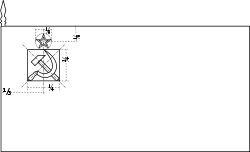
(c) I, Cmapm, CC BY-SA 3.0
The flag of the Soviet Union (1955-1991) using a darker shade of red.

Autor: Scroch, Licence: CC BY-SA 3.0
Flag of Bulgaria (1971-1990). Flag of Bulgaria with Bulgarian coat from 1971.
Autor: Scroch, Licence: CC BY-SA 3.0
Flag of Bulgaria (1971-1990). Flag of Bulgaria with Bulgarian coat from 1971.
Flag of Second Polish Republic and later People's Republic of Poland in period from March 29, 1928 to March 10, 1980. Red shade used here is HTML "vermilion" #E34234. Proportion 5:8.
Flag of Second Polish Republic and later People's Republic of Poland in period from March 29, 1928 to March 10, 1980. Red shade used here is HTML "vermilion" #E34234. Proportion 5:8.
Flag of South Korea (1949-1984)
Flag of South Korea from October 1997 to May 2011. In May 2011, the exact colors were specified into their current shades.
Flag of Iran. The tricolor flag was introduced in 1906, but after the Islamic Revolution of 1979 the Arabic words 'Allahu akbar' ('God is great'), written in the Kufic script of the Qur'an and repeated 22 times, were added to the red and green strips where they border the white central strip and in the middle is the emblem of Iran (which is a stylized Persian alphabet of the Arabic word Allah ("God")).
The official ISIRI standard (translation at FotW) gives two slightly different methods of construction for the flag: a compass-and-straightedge construction used for File:Flag of Iran (official).svg, and a "simplified" construction sheet with rational numbers used for this file.
Georgian flag in Pantone MS.
Olympische Spelen Amsterdam, 1928 : Olympisch kampioen Grieks/Romeins worstelen tot 62 kg, De Est Woldemar Wäli.















